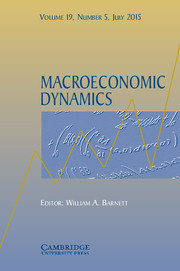
The Quantity Theory Revisited: A New Structural Approach
We propose a unified identification scheme to identify monetary shocks and track their propagation through the economy. We combine three approaches dealing with the consequences of monetary shocks. First, we adjust a state space version of the P-star type model employing money overhang as the driving force of inflation. Second, we identify the contemporaneous impact of monetary policy shocks by applying a sign restriction identification scheme to the reduced form given by the state space signal equations. Third, to ensure that our results are not distorted by the measurement error exhibited by the official monetary data, we employ the Divisia M4 monetary aggregate provided by the Center for Financial Stability. Our approach overcomes one of the major difficulties of previous models by using a data-driven identification of equilibrium velocity. Thus, we are able to show that a P-star model can fit U.S. data and money did indeed matter in the United States.




